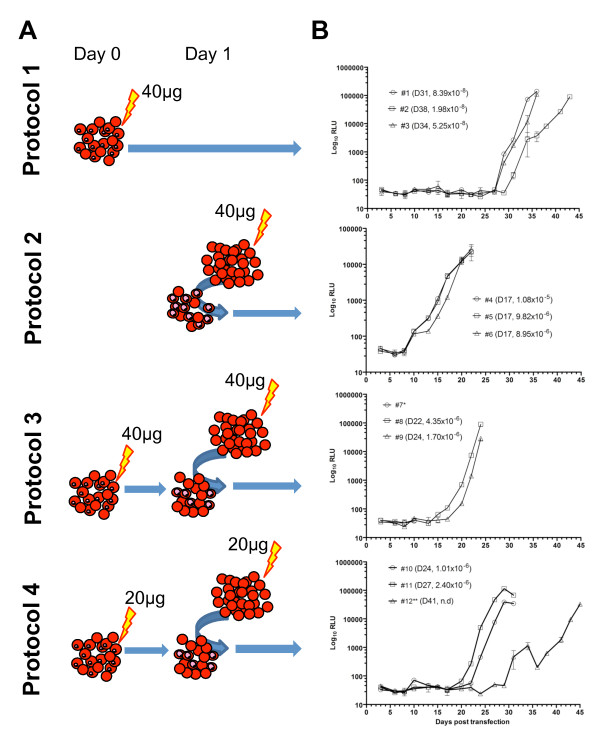Figure 1.
Quantitative analysis of the relative efficiency of electroporation-based transfection techniques (A) Schematic representing the four protocols employed in this study. Protocol 1, direct electroporation of 40 μg of plasmids pΔ1 and pINT into ring stage IE on Day 0; Protocol 2, preloading of 40 μg of plasmids into erythrocytes which are mixed with mature stage IE on Day 1; Protocols 3 (40 μg of plasmids) and 4 (20 μg of plasmids) use a combination of both Protocols 1 and 2 and is termed here the “double-tap” technique. (B) The timecourse of log10 RLU (Mean ± StDev, n = 3) over time for three independent transfections using each protocol. The key indicates the transfection tracking number (#), the days (D) post-transfection that an at least 1% asexual stage parasitaemia was directly observed microscopically and the mean transformation efficiency (parasites estimated to survive transfection No/input parasites). *Transfection #7 was lost on day 3 with evidence of bacterial contamination of culture. **In transfection #12, the lid of the culture flask split between days 34–36, resulting in loss of low oxygen environment. No determination (n.d) of transfection efficiency was made for this experiment for this reason.

